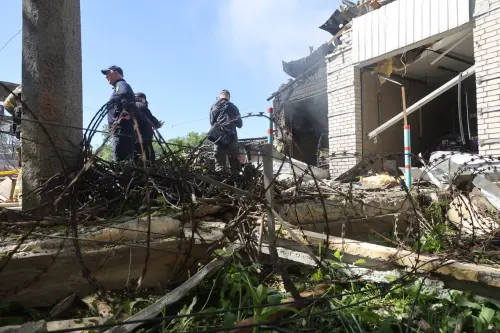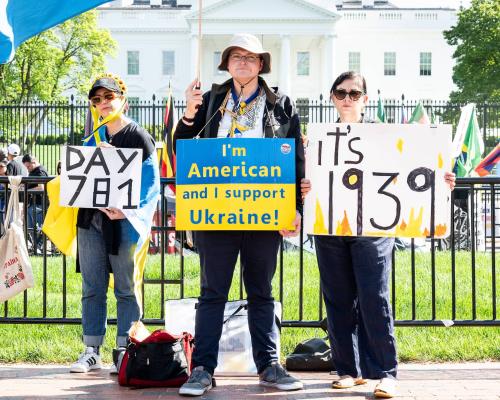MR. BORGIDA: And joining me now live from the Brookings Institution in Washington, Peter Singer. He has studied the subject of child soldiers, who now seem to be involved in a wide variety of movements and terrorist organizations. Thank you so much for joining us, Mr. Singer. We appreciate your time.
Talk to us a bit about who child soldiers are. Define the term for us, please—an age perhaps?
MR. SINGER: Basically, the international community has found that anyone beneath the age of 18 years old who is engaged in an armed struggle, a military struggle in a political context, is a child soldier.
MR. BORGIDA: How pervasive is this, Mr. Singer? I know you’ve written that 75 percent of the world’s armed conflicts include some child or adolescent soldiers. How pervasive is it?
MR. SINGER: It’s a phenomena that has pretty much exploded over the past decade. Like you said, about three-fourths of the conflicts out there involve children fighting in some manner. A lot of these kids are well below the age of 18, down to the age of 7—up to 14 is the primary age cohort. The number is around 300,000 children at war right now. And that’s just counting the ones who are combatants, not the ones who are in organizations, armed forces, that aren’t at war. And that’s even greater.
MR. BORGIDA: How are these young people, Mr. Singer, recruited to these kinds of groups? Is it a matter of poverty, really, they look for something important in their lives and someone seizes them and gives them something that’s important to them? How does that happen?
MR. SINGER: It takes places in two manners. Some of the children are non-voluntary. They are essentially abducted. That’s a phenomena that’s going on, for example, in Uganda, where children who were at schools, things like that, are rounded up and taken away and forced into these groups.
Another manner is voluntary, like you talk about. But to describe it as voluntary isn’t a real good description of it. Because, basically, they’re of the age that isn’t mature enough to make decisions for themselves in other matters, and it’s a little bit absurd to say, okay, well, they have the decision to join now into war. They’re driven either by poverty, seeking revenge, seeking identity, or basically seeking protection by joining a group that has weapons at hand.
MR. BORGIDA: We’re also talking now not just about boys, correct; we’re also talking about girls now, aren’t we?
MR. SINGER: Yes, that’s one of the things that’s different than in the past. About one-third of the groups that use child soldiers also have girl soldiers involved in them.
MR. BORGIDA: We’re seeing that as well in terms of the Palestinian suicide bombers. Is there any difference in character, in terms of gender, between the boys and girls? Any difference in how they’re recruited, that sort of thing, how they’re used?
MR. SINGER: There is some difference in how they’re used. Girl soldiers, in a lot of the contexts, take on more support roles than the active combatant roles. Also, there are some differences in the abuses suffered by the children. In a lot of these contexts, children are beaten by the adult leaders. Some of them are even killed. Girls particularly suffer from sexual abuse. And that has been a predominant problem in a lot of areas in Africa, for example.
MR. BORGIDA: Mr. Singer, how does a professional army of mature men and women deal with a force that’s comprised of young people? There must be a moment or two of concern when a professional soldier faces a 13- or a 14-year-old boy or girl with a weapon.
MR. SINGER: Yes, there are major difficulties there. And at the very bottom line, a bullet coming from a 14-year-old is just as lethal as one coming from a 40-year-old. But, at the same time, you have to realize that these are children, many of whom have been forced into this context and are looking for a way out.
So, one of the things that has to take place is intelligence, to know whether the force that you’re facing is there voluntarily or if there are people who have been abducted. Also, forces have to have a little bit higher levels of protection, because children tend to take risks that adults wouldn’t take. And a lot of these kids that they’re facing out there in the field have been forced to take drugs or things like that. So, they run straight into machinegun fire, things like that, that adults wouldn’t do.
And you also have to be aware that children have special rights within warfare. So, if a military force is deployed into these contexts, they should have officers who have been trained in these things, and are looking to also provide rehabilitation and other support.



Commentary
Child Soldiers
April 25, 2002